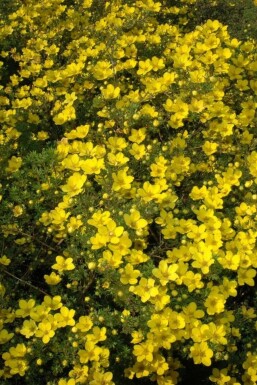
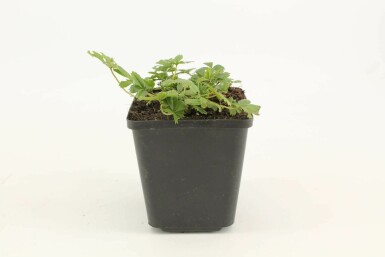
10cm



Updated on 10 September 2025
We regret to inform you that we are currently unable to ship orders to the United Kingdom. We anticipate being able to resume shipments at the beginning of 2026.
Potentilla is perfect for creating vibrant hedges and beautiful flowering borders. With its long blooming season, it offers bursts of colour and requires little maintenance. This hardy plant thrives in various garden settings and attracts bees and butterflies.


10cm



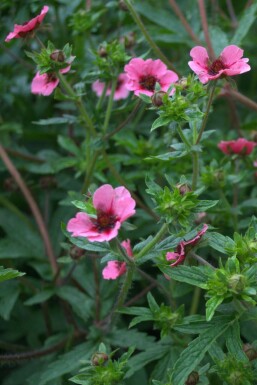
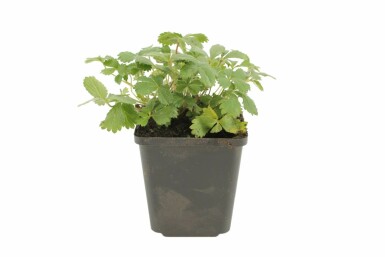
40cm




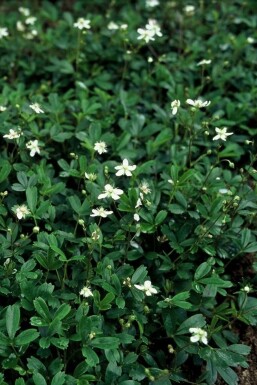
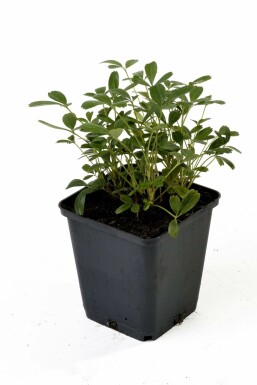



Potentilla is a versatile choice for any garden, flourishing from June to September. Its vibrant five-petaled flowers come in shades of yellow, white, and pink, adding a splash of colour to borders and beds. Known as a reliable long-flowering shrub, it thrives in drought-tolerant environments and attracts bees, making it a great addition to a wildlife-friendly space. Whether used for hedges, flowering borders, or simply as an ornamental feature, the Potentilla shrub offers endless possibilities. To maintain its beauty, it is important to prune Potentilla regularly. Consider adding this charming perennial to enhance the summer flowering appeal of the garden. Explore options to buy Potentilla UK for a unique garden feature.
Potentilla, also known as cinquefoil, is a versatile plant in the garden. It's part of the Rosaceae family and can be a low hedge or a colourful border bloomer. Often referred to as a Potentilla shrub, it's used in gardens for its long-flowering nature and compactness. The plant is drought-tolerant and thrives in sunny spots, making it easy to care for throughout the summer. Potentilla is native to Europe, Asia, and North America, but it adapts well to various garden settings, bringing beauty and attracting butterflies and bees.
Potentilla is a cheerful perennial with long-lasting bloom in soft colours. This plant is known for its compact, densely branched form, often growing as a low-growing shrublet. It thrives in sunny spots and can tolerate drought, making it a versatile choice for gardens. As the plant matures, Potentilla develops from its initial sprouting phase into a lush, compact shrub, perfect for borders or as a specimen in a natural garden setting. The blooming period for Potentilla extends from May to September. Factors such as climate and soil preparation are crucial for its flourishing. Warmer temperatures and well-drained soils help Potentilla bloom effectively. Regular pruning can maintain its vibrant appearance and compactness. Potentilla offers a stunning display of colours including yellow, orange, white, pink, and reddish hues. The colour may vary with the type, soil condition, and care. Good sunlight and proper feeding enhance its flower colours. Known for attracting bees, this plant adds biodiversity to gardens. Regarding scent, Potentilla plants are subtle. While not known for strong fragrance, the flowers can contribute mild scents, enhancing the garden's sensory experience. In terms of height, Potentilla can reach between 20 cm to 150 cm for herbaceous types and up to 2 m for shrub forms. The final height depends on the specific variety, garden location, and care. Pruning frequency and the plant's natural compactness are important for maintaining its health and appearance. Potentilla shrubs are a delightful choice for creating vibrant, bee-friendly landscapes.
Potentilla is known for its distinct leaf shapes, including palmately lobed, pinnate, and oval forms. Its leaves display a range of colours from grey-green to dark green, adapting to various conditions. The shape helps limit evaporation, making it resistant to drought. Potentilla often retains its foliage year-round in milder climates but may lose leaves in harsh winters. Its hardiness ranges from -29°C to -23°C, suitable for USDA zones 5 to 6. Wind exposure and soil conditions influence its frost tolerance. This plant is generally a hardy perennial with the potential to serve as a border bloomer or low hedge. Potentilla remains green throughout the year, though leaf shedding can occur depending on climate and location. It thrives best in well-drained soils and tolerates poor soil conditions. The plant's origin and leaf structure contribute to its heat and drought resistance, supported by a deep root system. Potentilla is not toxic, making it a safe choice in gardens with children and pets. Its profuse flowering from May to September helps attract pollinators like bees and butterflies, enhancing biodiversity and providing food and shelter for wildlife. With its long flowering season, it strengthens garden ecosystems and boosts resistance against pests. Consider growing Potentilla fruticosa in the UK for a vibrant, low-maintenance addition.
Potentilla, a versatile shrub, is a favourite among gardeners for its colourful blooms and low-maintenance nature. This long-flowering shrub offers bright and cheerful flowers that can enhance any garden setting. Its drought-tolerant qualities make it ideal for various garden applications, especially in areas where water conservation is a priority.
Potentilla thrives in sunny gardens and pairs well with various plants. It fits perfectly in hedges or flowering beds and stands out in drought-tolerant areas. Combine Potentilla with Lavandula for a delightful contrast. The purple spikes of Lavandula highlight the vibrant Potentilla blossoms, creating an eye-catching display. Another great pairing is with Salvia. The tall, spiky flowers of Salvia complement the bushy nature of Potentilla. Nepeta, with its soft, blue flowers, adds a calming effect to the garden, harmonising beautifully with Potentilla's bright colours. Achillea adds texture to the mix, while Coreopsis brings in a splash of yellow, enhancing the dynamic look. These combinations are not only appealing but also beneficial for pollinators. Potentilla, known as a bee-attracting plant, works well in a bee garden, encouraging biodiversity. Plus, these plants are all low-maintenance, making them ideal for those who enjoy a vibrant garden without too much fuss. Remember, Potentilla is a long-flowering shrub for colourful hedges or mass planting, providing lasting beauty throughout the season.
Potentilla thrives in sunny to lightly shaded areas, requiring at least 5 hours of sun daily. Sun exposure is crucial for its growth and vibrant blooms. The plant is not particularly wind sensitive, but providing a windbreak can help in exposed gardens. Potentilla favours dry, moderately fertile sandy or loamy soil. It's essential to have well-drained soil to prevent root rot. Regular fertilisation encourages growth, especially in poor soils. Potentilla's drought tolerance is enhanced by its leaf form, which reduces evaporation. The plant prefers soil with a neutral to slightly acidic pH level, and balancing soil pH affects its nutrient uptake. Maintaining adequate soil moisture is crucial, with factors like sun, wind, and soil type influencing moisture levels. Potentilla is a choice addition to garden borders, serving well as a border bloomer or low hedge. Consider buying Potentilla UK for summer flowering ornamental shrubs that enhance any garden space.
Potentilla, a popular choice for gardens, is best planted in spring or autumn. These seasons offer mild conditions that help the plant establish itself. For container-grown Potentilla, planting can occur year-round, except during frost. Those with root balls should be planted in spring or autumn. Proper spacing is important for Potentilla. It depends on the type and size at planting, as well as growth speed. Check plant properties on the Heijnen product page for guidance on how many can be planted per metre. A well-draining sandy or loamy soil is ideal. It is beneficial to add compost to poor soil. Heijnen planting soil is recommended to improve conditions. When planting, dig a hole twice the size of the root ball, place the Potentilla, and cover with soil. Water thoroughly after planting and during dry spells. Pruning helps maintain the shrub’s shape. Regular care, including watering and fertilising, ensures healthy growth. Potentilla thrives in sunny or lightly shaded spots, requiring at least 5 hours of sunlight per day. Its drought-resistant nature makes it a versatile addition to any garden. The primrose features of Potentilla make it a long-flowering perennial and a bee-attracting plant, enhancing the garden’s appeal.
Potentilla is a versatile plant that graces gardens with its long-lasting blooms from May to September. It's a popular choice for borders, low hedges, and natural gardens due to its adaptability and charming appearance. Learning how to care for Potentilla can ensure a flourishing garden.
Potentilla is a delightful addition to any garden with its stunning seasonal beauty. Known for its vibrant flowers, it showcases a variety of colours ranging from yellow, orange, and white to pink and reddish hues. Potentilla is not only a visual delight but also a wonderful bee plant with a long blooming period, making it an ideal choice for attracting bees and butterflies. Its dense, compact growth form makes it suitable for low hedges and borders, providing a neat and structured look to garden layouts. The leaves of Potentilla are just as appealing, offering shades of grey-green, light green, and dark green. This plant is drought-tolerant and thrives in sunny spots, ensuring a long-flowering season. As a hardy, low-maintenance shrub, it is perfect for gardeners of all skill levels. Moreover, Potentilla is excellent for creating bee gardens, and its drought-resistant nature makes it a reliable choice for sustainable gardening practices. Potentilla, or cinquefoil, is a colourful bee plant with a long blooming period.
Potentilla is a popular choice for many gardeners. This versatile plant offers many benefits and can be a great addition to any garden.
Advantages:
Disadvantages:
Proper soil preparation, placement, and regular care, including fertilisation, can reduce disease and pests. Consistent care ensures Potentilla thrives and blooms well.
Potentilla is an excellent choice for adding charm to any garden. These summer flowering ornamental shrubs are perfect for borders and hedges. With blooms from May to September, they offer months of vibrant colour. Potentilla is hardy, low maintenance, and drought-tolerant, making it ideal for various garden settings. At Heijnen, find the best Potentilla varieties for purchase. Their compactness and long flowering season make them a fantastic addition to sunny borders. Consider the flower colour when selecting the right Potentilla for your garden. Ensure proper pruning frequency to maintain their appealing shape. Potentilla offers several benefits. Its long flowering period is perfect for adding continuous colour. The low maintenance and drought tolerance of the Potentilla shrub make garden care easy. It also serves as a great option for hedges and flowering borders. The inclusion of primrose-like features enhances its garden appeal. Order Potentilla (Cinquefoil) from Heijnen and add months of blooming and a compact shape to your sunny borders or hedges.
We would like to provide some tips on how to plant and care for a Potentilla. By following these tips, you can be sure to enjoy your Potentilla for a long time.
Potentilla thrives in sunny to lightly shaded spots with well-drained soil. It prefers dry, moderately fertile sandy or loamy soil, making it drought-resistant and tolerant of poor conditions. Planting in spring or autumn when the weather is mild ensures good establishment. Ensuring at least 5 hours of sunlight daily helps the plant to grow healthily. The right location enhances growth, resulting in vibrant blooms and healthy foliage. Use as a shrub, in borders, or as a low hedge to add colour and structure to the garden. Potentilla also works well in planters, making it versatile for various garden applications. Its ability to limit leaf evaporation benefits its survival in dryer climates. Selecting the optimal location is crucial for its growth and flowering, offering a resilient and colourful addition to any garden setting.
Preparing the soil is key when planting Potentilla. Proper soil preparation ensures that the plants receive enough water and nutrients. Begin by loosening the soil, which allows water to filter through easily. Mixing in organic matter like compost improves the soil's nutrient content. For Potentilla, well-drained sandy or loamy soil is ideal. It's important to carry out soil preparation before planting. Pot-grown Potentilla can be planted any time, except during frost. For those grown with a root ball wrapped in jute, planting in spring or autumn is best. Keep the jute around the root ball intact. After planting, watering is essential until the plants establish roots. When planting, consider the plant size to determine how many can fit per square metre. Ensure the location is sunny to lightly shaded for optimal growth.
Fertilising Potentilla is crucial for lush growth and vibrant blooms. Timely fertilisation supports healthy plant development, ensuring strong roots and abundant flowers. Using organic fertilisers from Heijnen enhances growth and vitality, as these contain essential nutrients. Applying fertiliser twice a year is optimal: once in spring and again in summer. This schedule supports the plant during its key growth phases. The amount of fertiliser depends on the plant's size, and it is crucial to choose the right quantity. Nutrients become available once rain or watering helps them penetrate the soil. In dry conditions, it’s important to water the garden after fertilising so that nutrients are absorbed by the roots. Potentilla thrives with this care regimen, showcasing its colourful blooms in gardens and borders. Consider using a universal bloom fertiliser or compost in spring for the best results.
Potentilla should be pruned to encourage healthy growth and abundant blooms. This plant benefits from annual pruning. It is best pruned after flowering in March. Pruning helps in maintaining the plant’s shape and promotes flowering as it blooms on young wood. Use sharp secateurs for precise cuts, which is essential for proper pruning. Maintaining sharp tools ensures clean cuts and prevents damage to the plant. Whether used as a low hedge or border bloomer, proper pruning helps the Potentilla look its best. Regular pruning of Potentilla keeps the plant neat and encourages more vibrant flowers. Consistent care ensures the plant thrives and adds beauty to the garden. Remember, Potentilla responds well to shaping, making it easy to maintain. For a primrose-like display, keep pruning each year to about 10–15 cm. This simple technique ensures a healthier plant and more blossoms.
Potentilla requires consistent watering until established. New plants need regular moisture to help roots grow. Once properly rooted, they only need water during prolonged dry spells. It's better to water deeply rather than giving a little daily. Early morning or late evening is the best time to water, as less water will evaporate. Check the soil to ensure it truly requires water, as excess moisture should always drain away, whether in the ground or pots. Drip irrigation systems are effective when Potentilla is fully rooted, but initially, manual watering is beneficial. This plant has good drought tolerance, making it ideal for dry borders. However, during dry periods, flowering may decrease without adequate watering. Primrose, another plant, can also benefit from these practices to ensure healthy growth in the garden.
Potentilla is a hardy plant ideal for borders and hedges. It features profuse flowering in various colours, attracting bees and butterflies to the garden. This low-maintenance plant is drought tolerant, requiring little care. Historically, Potentilla has been seen as a symbol of healing and protection in folk medicine. It is generally safe for children and pets, adding both beauty and ecological value to the surroundings. Enjoy its long season of blooms in a garden setting.
Potentilla plants thrive when divided every few years, usually in autumn. Dividing promotes healthy growth and keeps the plant vigorous. It involves digging up the plant and carefully separating young sections from older parts. Replanting the young sections ensures continuous flourishing, while removing old parts refreshes the garden. This method strengthens the root system and enhances flowering. Dividing Potentilla with a spade or garden fork maintains the plant's vitality. It's best carried out in autumn, allowing roots to establish before spring. Regular division prevents overcrowding and encourages new growth. A garden can benefit greatly from dividing, as it sustains plant health and appearance. Using sharp tools ensures clean cuts and minimal plant stress. Potentilla division is a key task for maintaining a thriving garden.
The primrose is a hardy perennial with long flowering periods, perfect for borders and hedges. Its vibrant five-petaled flowers come in shades of yellow, orange, white, pink, and reddish, paired with attractive grey-green leaves. This low-maintenance, drought-tolerant plant attracts bees and butterflies, enhancing the garden's biodiversity. Order Potentilla (primrose) from Heijnen for a colourful and eco-friendly addition to any garden.
